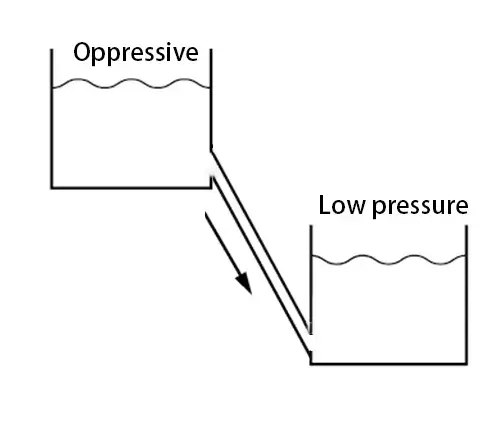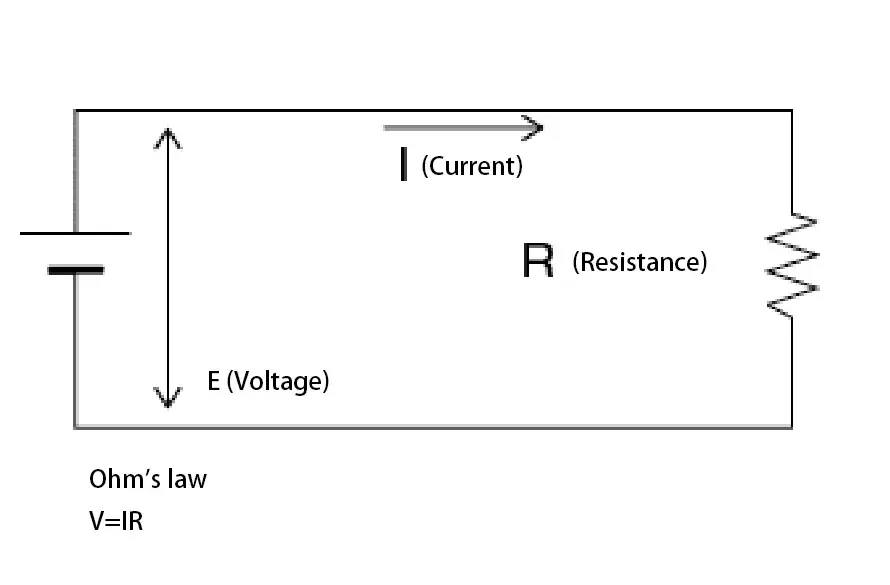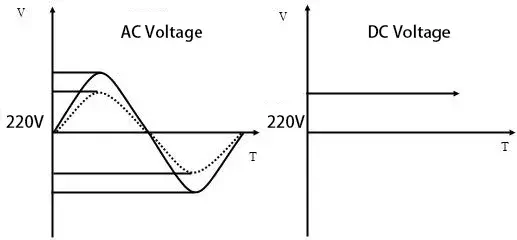Introduction To Voltage
Voltage is a fundamental concept in the field of physics and electrical engineering, representing the potential energy difference between two points in an electrical circuit. In simpler terms, voltage is the force that drives electric current through a conductor.
It is measured in volts (V) and signifies the amount of electrical potential energy per unit charge. This potential difference creates an electric field that exerts a force on charged particles within the circuit, causing them to move and generate current flow.
Moreover, voltage can be understood as the driving factor behind electricity’s ability to power various devices and systems. Without voltage, electrons would not have the necessary push to move through conductors and create electrical currents.
Voltage catalyzes energy transfer within circuits, enabling lights to illuminate, motors to run, and electronic devices to function. In essence, voltage acts as the lifeline of electrical systems, providing the necessary push for electrons to flow and perform useful work.
Importance Of Voltage In Electrical Systems
Voltage plays a critical role in ensuring the proper functioning and operation of electrical systems across various industries and applications. It serves as a foundational parameter that influences current flow, power distribution, and overall system performance. Maintaining stable voltage levels is essential for preventing equipment damage, optimizing efficiency, and ensuring safety within electrical installations.
In addition to its operational significance, voltage also dictates the behavior of components within a circuit. Different devices require specific voltage levels to operate effectively and safely.
By controlling and regulating voltages within prescribed limits, engineers can ensure that electronic components receive adequate power without being subjected to excessive stress or failure. Understanding how voltage impacts system functionality is crucial for designing reliable electrical networks that deliver consistent performance while mitigating risks associated with overvoltage or undervoltage conditions.
Unlocking The Concept Of Voltage

Explanation of Electric Potential Difference: Voltage, often referred to as electric potential difference, is a fundamental concept in the realm of electrical engineering. It represents the force that drives electric charges to move within a circuit.
Electric potential difference is analogous to the pressure in a water pipe – just as water flows from high pressure to low pressure, electric current flows from high voltage to low voltage. When there is a voltage between two points in a circuit, it signifies that work can be done on charged particles moving between those points.
Relationship between Voltage, Current, and Resistance (Ohm’s Law): Ohm’s Law establishes a crucial relationship between voltage (V), current (I), and resistance (R) in an electrical circuit. It states that the current flowing through a conductor is directly proportional to the applied voltage and inversely proportional to the resistance of the conductor.
Mathematically expressed as V = IR, where V is voltage in volts, I is current in amperes, and R is resistance in ohms, Ohm’s Law serves as a foundational principle for understanding and analyzing electrical circuits. This relationship underscores how changes in voltage can impact both current flow and overall circuit behavior.

Diving Deeper Into Voltage Dynamics
The Interplay of Voltage and Circuit Operation: In practical terms, varying the voltage across a circuit can have significant implications for its operation. Higher voltages provide increased driving force for electrons to flow through components like resistors or light bulbs with greater intensity. Conversely, lower voltages result in diminished electron flow within the circuit.
Understanding how these changes influence current levels and component performance is essential for designing efficient and reliable electrical systems. Voltage Gradients and Potential Energy: A key aspect of comprehending voltage lies in recognizing its role as an energy source within an electrical system.
Types Of Voltage Sources
Direct Current (DC) Voltage

Direct current (DC) voltage is characterized by a continuous flow of electrical charge in one direction. This unidirectional flow of electrons distinguishes DC voltage from alternating current.
DC voltage sources are commonly used in electronics where a steady and constant supply of power is required. One of the key characteristics of DC voltage is its ability to maintain a consistent polarity over time, making it suitable for applications such as battery-powered devices and electronic circuits.
DC voltage finds extensive applications in various fields, including telecommunications, automotive, and renewable energy systems. For instance, solar panels generate DC electricity which can be stored in batteries for later use.
Electronic devices such as smartphones, laptops, and LED lights operate on DC power supplies. The stability and reliability of DC voltage make it an essential component in powering low-voltage applications where a constant supply of electricity is critical for optimal performance.
Examples of DC voltage sources include batteries, solar cells, and power supplies with rectifiers that convert alternating current to direct current. Batteries are among the most common sources of DC voltage used in portable devices like flashlights, remote controls, and electric vehicles.
Solar cells harness sunlight to produce DC electricity for residential or commercial solar energy systems. Power supplies equipped with rectifiers are employed to convert AC mains power into DC output for powering sensitive electronic equipment.
Alternating Current (AC) Voltage
Alternating current (AC) voltage is characterized by an oscillating flow of electrical charge that periodically reverses direction within a circuit. Unlike direct current, AC voltage changes polarity at regular intervals, typically following a sinusoidal waveform pattern. AC voltage is widely utilized in homes, businesses, and industries for delivering electrical power efficiently over long distances through transmission lines.
The versatility and ease of transformation make AC voltage suitable for a wide range of applications such as lighting systems, electric motors, heating appliances, and industrial machinery. The ability to step up or step down voltages using transformers enables efficient distribution and transmission across power grids without significant loss or drop in energy levels.
AC voltage also allows for easy integration with smart grid technologies for monitoring and controlling power consumption more effectively. Examples of AC voltage sources include utility mains power supplied by electric companies to residential buildings and commercial establishments.
Generators driven by engines or turbines also produce AC electricity commonly used in emergency backup systems or remote locations without access to grid power. In industrial settings, variable frequency drives convert incoming AC supply into adjustable voltages suitable for controlling the speed of motors used in manufacturing processes.
Measuring And Expressing Voltage
Units Of Measurement For Voltage (Volts)
Voltage is a fundamental quantity in the field of electronics and electrical engineering, representing the potential difference between two points in an electrical circuit. The unit used to measure voltage is the volt, symbolized as “V.” One volt is defined as the electric potential difference required to move one coulomb of charge between two points while expending one joule of energy. This unit was named in honor of Alessandro Volta, a pioneer in the study of electricity.
The volt serves as a standard unit for quantifying voltage levels across various electrical systems and components. When discussing voltage levels, it is common to encounter prefixes that modify the base unit “volt.” For instance, kilovolts (kV) represent thousands of volts, while millivolts (mV) denote thousandths of a volt.
These prefixed units are essential for expressing voltage values that range from very low (microvolts) to extremely high (megavolts) magnitudes. Understanding these prefixes is crucial for interpreting and working with different voltage specifications effectively.
Using Multimeters To Measure Voltage

Multimeters are versatile electronic devices widely utilized for measuring various electrical parameters, including voltage. These instruments typically feature a display screen, probes or leads for connection, and settings for selecting different measurement functions.
To measure voltage accurately using a multimeter, it is essential to set the device to the appropriate voltage range based on the expected magnitude of the signal being measured. Common options include DC volts (for direct current) and AC volts (for alternating current).
To measure voltage with a multimeter, one must first ensure that the circuit or component under test is de-energized to prevent accidents or damage. The probes are then connected across the points where voltage measurement is required while observing proper polarity orientation if applicable.
Once connected, reading on the multimeter display indicates the measured voltage level at that specific location in real-time. Multimeters provide invaluable assistance in diagnosing circuit issues, verifying power supply outputs, and ensuring electrical safety by monitoring voltage levels accurately.
Factors Influencing Voltage Levels
The Impact Of Load Resistance
When it comes to voltage levels, one crucial factor that plays a significant role is the load resistance within an electrical circuit. Load resistance refers to the opposition offered by a device or component to the flow of electric current. In simple terms, the higher the load resistance in a circuit, the lower the current that flows through it.
This relationship is governed by Ohm’s Law, which states that voltage equals current multiplied by resistance (V = I x R). Therefore, variations in load resistance directly impact voltage levels within a circuit.
Load resistance influences voltage levels in practical ways as well. For instance, in a series circuit with multiple resistors, an increase in load resistance leads to a decrease in voltage across each resistor.
This phenomenon is crucial for maintaining balanced power distribution and preventing overload or underload conditions within electrical systems. Engineers must carefully analyze and regulate load resistance to ensure optimal voltage levels for efficient operation.
Navigating Power Supply Variations
Power supply variations are another critical aspect influencing voltage levels within electrical systems. A stable power supply is essential for maintaining consistent voltage levels across circuits and devices.
Fluctuations or disturbances in power supply can lead to overvoltage or undervoltage conditions, potentially damaging equipment and jeopardizing system performance. To mitigate these risks, engineers often incorporate voltage regulation mechanisms such as transformers or voltage regulators into power supply designs.
Moreover, external factors like changes in ambient temperature or fluctuations in grid electricity can also affect power supply stability and subsequently impact voltage levels. Understanding these variations and their potential consequences is paramount for ensuring reliable operation of electrical systems.
By implementing appropriate measures such as surge protection devices and backup power solutions, engineers can safeguard against unforeseen power supply fluctuations that could compromise overall system performance. Both load resistance and power supply variations are integral factors influencing voltage levels within electrical systems.
Engineers must carefully manage these variables to maintain optimal operating conditions and prevent potential hazards associated with unstable voltages. By considering these factors during system design and implementation stages, professionals can uphold efficient performance standards while ensuring longevity and reliability in diverse electrical applications.
Impacts Of Incorrect Voltages
Overvoltage: When Too Much Is Dangerous
Overvoltage, defined as a voltage level higher than the standard operating range, can have detrimental effects on electrical devices. The excessive voltage can lead to accelerated wear and tear of components, causing them to fail prematurely.
Circuit boards, transistors, and other sensitive electronic components are particularly vulnerable to damage from overvoltage. In extreme cases, overvoltage can result in catastrophic failures such as short circuits or even fires within the equipment.
Moreover, overvoltage poses significant safety concerns for both users and bystanders. When electrical devices are subjected to voltages beyond their design limits, there is an increased risk of electric shocks or electrocution.
Overheating due to excessive voltage can also create fire hazards in residential or industrial settings. Therefore, maintaining proper voltage levels is crucial not only for the longevity of equipment but also for ensuring the safety of individuals interacting with electronic devices.
Undervoltage: The Silent Performance Killer
Conversely, undervoltage occurs when the voltage supplied to electrical equipment falls below the required levels for optimal performance. This condition can have a wide range of consequences on equipment performance, starting with reduced efficiency and output capacity. Motors may struggle to start or operate at full capacity under undervoltage conditions, leading to increased energy consumption and decreased productivity.
In addition to affecting individual equipment performance, undervoltage poses risks to overall system stability. Critical systems relying on consistent power supply may experience disruptions or malfunctions when subjected to inadequate voltages.
For example, sensitive electronics like computers or medical devices might fail unexpectedly due to fluctuations in power supply caused by undervoltage situations. Ensuring that all components receive the appropriate voltage is essential for maintaining system integrity and preventing costly downtime.
Regulations And Standards For Safe Voltages
International Electrotechnical Commission (IEC) Guidelines
The International Electrotechnical Commission (IEC) plays a crucial role in establishing global standards for electrical systems, including guidelines for safe voltage levels. These guidelines are designed to promote the safety and efficiency of electrical installations across different countries and industries. The IEC sets specific voltage limits for various applications to ensure compatibility and reduce the risk of electrical hazards.
One key aspect of the IEC guidelines is the standardization of voltage tolerances, which specify acceptable ranges within which voltages must operate to prevent damage to equipment and ensure reliability. The IEC also provides recommendations for insulation levels based on voltage ratings, helping manufacturers design products that can withstand specific voltage stresses.
By adhering to these guidelines, professionals in the electrical industry can ensure that their installations meet international safety standards and operate reliably under normal conditions. Moreover, the IEC guidelines address issues such as harmonic distortion caused by non-linear loads, which can affect voltage quality and impact the performance of sensitive equipment.
By providing recommendations on power quality parameters related to voltage fluctuations and distortions, the IEC helps organizations maintain stable power supplies and avoid disruptions in their operations. Overall, adherence to IEC guidelines not only enhances safety but also contributes to energy efficiency and sustainability in electrical systems worldwide.
National Electrical Code (NEC) Standards
In the United States, the National Electrical Code (NEC) serves as a critical resource for setting standards related to safe electrical practices, including regulations concerning voltage levels in various settings. The NEC establishes minimum requirements for voltages used in residential, commercial, industrial, and other types of installations to protect against electric shock hazards, fires, and equipment damage.
By following NEC standards, electricians and building professionals can ensure compliance with national regulations aimed at safeguarding lives and property. One essential aspect of NEC standards is the specification of maximum allowable voltages based on application requirements and environmental conditions.
For instance, NEC regulations outline appropriate voltage ratings for wiring systems depending on factors such as insulation type, ambient temperature, conductor size, and installation method. By detailing safe operating parameters for different situations, the NEC helps prevent overvoltage or undervoltage scenarios that could compromise system integrity or endanger occupants.
Furthermore, the NEC addresses grounding requirements essential for maintaining stable voltages within acceptable limits and minimizing electromagnetic interference that may distort power signals or create safety risks.
By emphasizing proper grounding techniques and bonding practices, the NEC ensures that electrical systems remain resilient against external disturbances and operate efficiently without compromising user safety or equipment functionality.
Adhering diligently to NEC standards fosters a culture of responsibility among practitioners in upholding high-quality workmanship and prioritizing safety considerations when working with electricity.
Conclusion
The Role And Significance Of Proper Voltage Management In Electrical Systems
Proper voltage management is not merely a technical requirement but a fundamental necessity for the efficient functioning of electrical systems. Maintaining stable voltages ensures that equipment operates within optimal parameters, minimizing the risk of damage or malfunction due to overvoltage or undervoltage conditions. By adhering to industry standards and regulations regarding voltage levels, organizations can enhance the reliability and longevity of their electrical infrastructure, ultimately leading to cost savings and improved operational performance.
Ensuring Safety Through Voltage Regulation
Voltage management plays a crucial role in ensuring the safety of both personnel and equipment within electrical systems. Overvoltage events can pose serious risks such as electrical fires or equipment failures, while undervoltage conditions may compromise system stability and lead to operational disruptions.
By implementing proper voltage regulation practices, organizations can mitigate these hazards, creating a secure working environment and safeguarding valuable assets against potential damages. Prioritizing voltage stability is not only a matter of compliance but an ethical responsibility towards maintaining safety standards in all operational settings.
Cultivating Innovation Through Voltage Optimization
Embracing the principles of voltage management not only fosters system reliability and safety but also paves the way for innovation in energy efficiency and sustainability initiatives. By optimizing voltage levels through advanced technologies like smart grids or energy management systems, organizations can reduce power wastage, lower carbon footprints, and contribute to environmental conservation efforts.
Properly managed voltages enable greater flexibility in power distribution networks, supporting the integration of renewable energy sources and promoting a greener future for generations to come. Ultimately, by harnessing the potential of voltage optimization, we empower progress towards a more resilient and environmentally conscious electrical infrastructure landscape.
Other Electricity Basics
To learn more about electricity then you can read the following article:
Measuring Battery Frequency: A Comprehensive Guide




